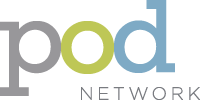On November 30, 2017, the American Academy of Arts and Sciences released the final report of the Commission on the Future of Undergraduate Education, entitled, The Future of Undergraduate Education, The Future of America. The POD Network in Higher Education and the Network of STEM Education Centers (NSEC) commend the Academy’s attention to educational quality, with its many implications for college completion, long-term student success, and affordability. The POD Network and NSEC would like to add an important supplement to the work by calling attention to how Centers for Teaching and Learning (CTLs) and STEM Education Centers (SECs) already contribute to this mission. Because effective change efforts involve a systemic approach, we hope to prompt closer collaborations with the Academy on future reports, as well as on discussions and actions that follow.
As the Commission highlights, the ways in which institutions value teaching, the training and professional development they provide to faculty across career stages (beginning in graduate school), and the attention they pay to both contingent and tenure track instructors, are all crucial elements of improving undergraduate education. Ultimately, investment in excellent teaching is a systemic issue, requiring coordinated efforts through multiple levels, networks, roles, and resources—on each campus, regionally, within and across academic disciplines, and on a national scale. Centers for Teaching and Learning (CTLs), and STEM Education Centers (SECs) represent important loci for such efforts.
Below, the POD Network and NSEC provide a brief overview of ways in which CTLs and SECs are contributing to the Commission’s three national priorities—to strengthen the student educational experience, to increase completion and reduce inequities, and to control costs and increase affordability—and reflections on the future. Such reforms are university-wide and higher education-wide responsibilities, with CTLs supporting these priorities across many disciplines, and SECs focusing on Science, Technology, Engineering, and Mathematics fields.
Priority 1: Strengthen the Student Educational Experience
The Commission seeks to “ensure that all students—whatever their program of study—have high-quality educational experiences that prepare them for success in the twenty-first century.” CTLs and SECs are frequently and directly engaged in recommended endeavors such as “meaningful and explicit teacher training” for graduate students, mentoring and resources for both contingent and tenure-track faculty, and support/facilitation for departments revising and rethinking curricula to “incorporate academic, career, and civic knowledge and skills as a foundation for rewarding and productive lives and careers” and meaningfully assess their students’ learning. SECs and CTLs also collaborate to improve student learning and success on our campuses, and both types of centers engage in discipline-specific faculty development (also referred to as educational development) efforts. There is a robust and growing body of evidence on the effectiveness of such work, both across disciplines and in particular disciplines such as engineering.
Priority 2: Increase Completion and Reduce Inequities
In order to “increase completion rates and reduce inequities among different student populations,” CTLs and SECs regularly support faculty in making “meaningful, personalized connections” with students, as well as “understanding and assisting students from groups with the lowest completion rates” through extensive programs and services focusing on inclusive teaching and interventions that reduce achievement gaps. These efforts may include collaboration with offices of academic affairs, student affairs, institutional research, centers for diversity, and faculty governance bodies; in such coordinated efforts, SECs and CTLs often serve to bridge gaps between data on student success and educational practices in classrooms and departments; bring to bear theories of change, discipline-based educational research, and the scholarship of teaching and learning; and support experimentation and innovation with relevant assessment approaches. SECs in particular have been “advanc[ing] the cause of better precollege education” in STEM fields for decades, through their focus on preparing K–12 STEM educators.
Priority 3: Control Costs and Increase Affordability
This priority seeks, ultimately, to “make undergraduate education financially accessible to all who can benefit.” At the institution level, instructional quality is related to student outcomes and institutional finances. CTLs and SECs are two concrete ways in which institutional investments in high-quality teaching translate to changes in student experience and success, and, ultimately, costs and affordability. Such centers regularly contribute perspectives on governance and institutional policies based in organizational change, within committees and among faculty colleagues, thereby contributing to “openness and…candid discussion” about supporting student achievement.
The Future: Further Discussions and Research
In its reflections on next steps, the Commission calls for a “deeper understanding of the relationship of teaching to student learning… and the many factors that affect this dynamic,” as well as for development and implementation of “systematic measurement of what students have learned, how well they learned it, and whether some groups are learning more than others.” NSEC and the POD Network endorse such efforts, already underway among many of our members, who continue to work on the development and deployment of disciplinary measures of learning gains and their use in understanding student progress, persistence, and relationship with teaching practices.
Going forward, the POD Network and NSEC, with our communities of well-informed researchers and practitioners, are excited to work with the Commission and other higher education stakeholders to contribute to the creative work of scaling up and supporting policies that improve the quality and outcomes of undergraduate education. We thank the American Academy of Arts and Sciences for their call to action, and we invite closer collaboration on upcoming work—there is much to do, and we are wise to undertake it together with a systemic, interconnected approach.
—POD Network Board of Directors, Executive Committee, and President
—Network of STEM Education Centers

